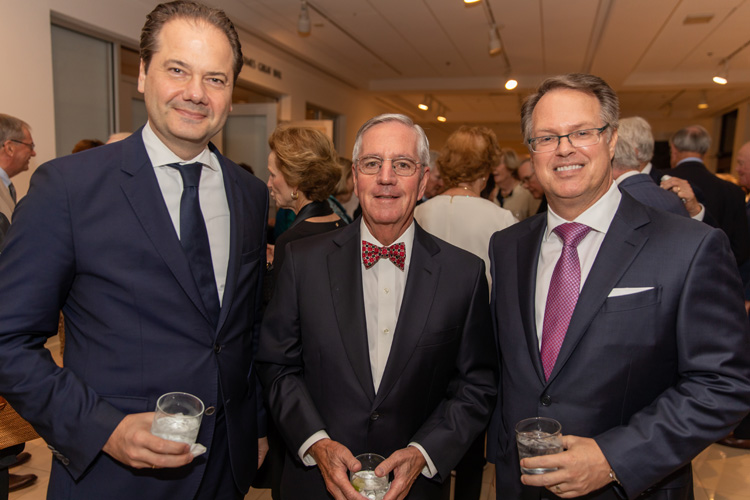
Max Hollein, who in 2018 became director of the world-renowned Metropolitan Museum of Art, shared insights on the globalization of museums to appreciative audiences at the recent Vero Beach Museum of Art’s Director’s Society and Chairman’s Club Dinner.
The Austrian-born Hollein, only the 10th director of the Met, which will celebrate its 150th anniversary next year, began his talk with a history of museums, which began a little over 200 years ago.
“It kind of started in the Age of the Enlightenment, and was an effort to bring the cultures of the world together in one place. With these objects, museums seem to tell a linear narrative of humankind and cultural development,” said Hollein.
In today’s globalized world, he said the story of cultural development has evolved into something more complex.
“In fact, we have to realize that there is not one story of the development of culture, but that there are many simultaneous intersecting stories throughout the ages. There is, and there has always been, a speck of connected cross-cultural histories that need to be discovered and uncovered,” said Hollein.
“And therefore the most important goal of the Metropolitan to assume, as one of the largest museums in the world, is to complicate the narrative; to celebrate artistic excellence and cultural achievement, and to foster understanding to a diversity of narratives from multiple perspectives.”
The challenge, he said, in this time of rising nationalism, is to determine how to inject the global narrative into a 150-year-old institution, and clarify what actually constitutes a museum in the 21st century, where even mundane items such as groceries are ‘curated.’
“We need to embrace this curiosity in what we offer,” said Hollein. “We have an obligation to make ourselves relevant in an environment where culture, politics, technology and entertainment flow together.”
Touching on the role museums can play, he said they want the Met to tell the full story of its works of art and how they connect within the artistic, historic, social and political framework of our lives.
“We have to realize that the objects we have in our custody, actually, don’t tell the truth. They are often a very sophisticated way of propaganda.”
Providing a brief history of the Met, he said that while New York City has always been considered a crossroad of the cultural world, the only self-proclaimed cultural institution in New York in 1841 was PT Barnum’s American Museum, essentially a circus.
It wasn’t until 1866 that a group of New Yorkers visited the Louvre in Paris.
“They liked what they saw there, and in typical New Yorker fashion said ‘We want that.’ The only problem was they didn’t have a single work of art, they had no money and there was no building. But there was typical great American ambition and outstanding philanthropy, like what you’re experiencing here at the Vero Beach Museum of Art.”
The Met became a reality in 1870, founded by private citizens. From its initial antiquities exhibits, the Met has grown to vast holdings of more than 1.5 million objects and an average of about 7 million visitors each year.
“From the very beginning, as we began to grow, we saw ourselves as a public resource for all,” said Hollein, “with an understanding that we have to educate the people; to bring the cultures of the world to a wide audience.”
They are now working on intertwining exhibits to create a more fluid environment where cultures from different countries can converge, even juxtaposing artworks from different centuries to better contextualize works and tell both sides of the narrative.
“We are updating our narrative in the next 10 years,” said Hollein, citing plans to redo many of the galleries and build a new wing. “In the next 10 years, one-quarter of the Met’s gallery system and its narrative will be renewed and refreshed, recontextualized, and will benefit from new scholarship and understanding that has been amassed in the last years.”
The goal is to have the Met remain a home for varying cultures with changing narratives, an institution that will continue to be engaging, accessible and inclusive for the next 150 years.
“The Met will be a museum for the world, about the world and in the world,” said Hollein.



